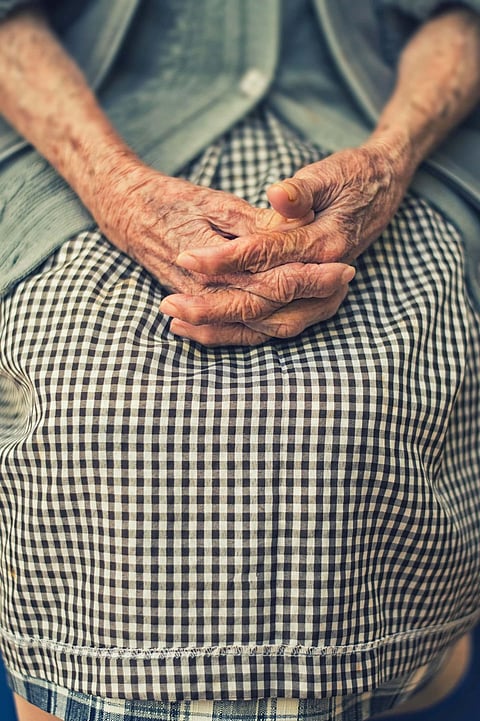
- Home
- न्यूजग्राम
- NewsGram USA
- India
- World
- Politics
- Entertainment
- Culture
- Lifestyle
- Economy
- Sports
- Sp. Coverage
- Misc.
- NewsGram Exclusive
- Jobs / Internships

In January 2020, 81-year-old Alla Naidenko – a former physician and animal rights advocate – was admitted to Sutter Roseville Medical Center near Sacramento, California, for a standard kidney stone removal. Yuriy, her adult son, stayed with her through the procedure and went home to get some rest as his mother recovered. When he arrived the next day, he found his mother had been moved to the intensive care unit, badly bruised and beaten, leaving her face pulverized and purple, and she was paralyzed from the neck down. With her brain hemorrhaging from a brutal attack, Alla slipped into a coma and was place on a ventilator for weeks. Her son was left in shock and in complete disbelief of how his mother was so violently attacked while in the hospital for a seemingly routine kidney stone procedure.
Follow NewsGram on Quora Space to get answers to all your questions.
Elder abuse is a problem worldwide, and in countries you would never expect, like the United States. This is such a significant public health problem that a recent study based on the evidence from 52 studies in 28 countries from diverse regions, including 12 low-to-middle-income countries, was conducted. The study estimated that more than 15 percent of elderly citizens aged 60 years and older were victims of some form of abuse in a year. This includes physical abuse, psychological abuse, sexual abuse, and neglect.
15 percent of elderly citizens aged 60 years and older were victims of some form of abuse in a year. Unsplash
These numbers are most likely underestimated. In many cases, older adults are less likely to report the incidence of abuse. In Alla's case, the abuse was evident, and she did receive life-saving surgeries. However, it is still unclear how she ended up paralyzed, connected to life support, fed through a tube, and showing no cognitive activity. To this day, the hospital has refused to comment on how her simple kidney stone procedure turned into a tragic story of a vicious attack against a helpless, elderly mother.
Unfortunately, stories like Alla's are only going to become more common as aging populations reach the 60-year-old benchmark. It is predicted that by the year 2050, the global population of people aged 60 years and older will more than double, from 900 million in 2015 to about 2 billion, with the vast majority of older people living in low and middle-income countries. If elder abuse victims' ratio continues, victims will rapidly increase, growing to more than 320 million by 2050.
Physical abuse of elderly persons ranges from minor scratches, bruises, broken bones, and disabling injuries, much like what Alla had suffered. In her case, like many others, the abuse can cause long-lasting rehabilitate care and can have severe psychological consequences, including depression, anxiety, isolation, hopelessness, degradation, and suicidal ideation. For the elderly, the results of abuse can be especially severe and will much longer recovering times. Our elderly are fragile, and even relatively small injuries can cause severe and permanent damage or even death.
Several factors surround the incidence of elderly abuse. These include an individual's particular level of physical and mental health or mental disorder, low-income family relationships, the dependency of a family member or friend, social isolation where a non-related caregiver abuses older person, and socio-cultural risks. These include racism, perpetuated stereotypes that the elderly are frail, weak, unable to defend themselves, and the simple lack of money for an older adult to receive the proper attention and care.
If elder abuse victims' ratio continues, victims will rapidly increase, growing to more than 320 million by 2050. Unsplash
In hospitals and other healthcare facilities, factors include low standards of care, deficiency in proper environments, poorly trained (or overworked) staff, and the unfortunate policy development that tends to protect the healthcare facility rather than the patient. Data on the extent of abuse in hospitals, nursing homes, and other long-term care facilities are insufficient. With that said, in review and analysis of recent studies on elder abuse in institutional settings and within the community (or home setting), the rates of abuse are much higher in institutions. The other discerning finding was that more than 60 percent of institution staff members (hospital staff, nurses, orderlies, etc.) committed the abuse. This is a huge problem given the collective trust placed in hospitals and other healthcare facilities.
In Alla's case, the statistics surrounding hospitals and other healthcare facilities have become alarming true, leaving her with no option but to endure costly and painful, long-term rehabilitative care. Alla's family investigates the abuse and is seeking legal action, but that process seems to be just as slow and painful as her recovery.
Elder abuse is simply horrific. It is hard to imagine that our elderly citizens are subjected to various types and levels of abuse, especially given the fragile and defenseless nature at this stage of life. This type of unconscionable abuse constitutes a human rights violation leaving many of its victims broken in body and spirit, bruised in mind and soul, and left emotionally bankrupt due to loss of dignity and respect. As a species, humans are intelligent and compassionate enough to recognize this wrongdoing and continue to fight against elderly abuse. Respecting our aging populations to preserve their dignity, assist them in aging gracefully, and protecting the collective wisdom they can impart is the responsibility of every generation.
(Disclaimer: The article is sponsored, and hence promotes some commercial links.)
